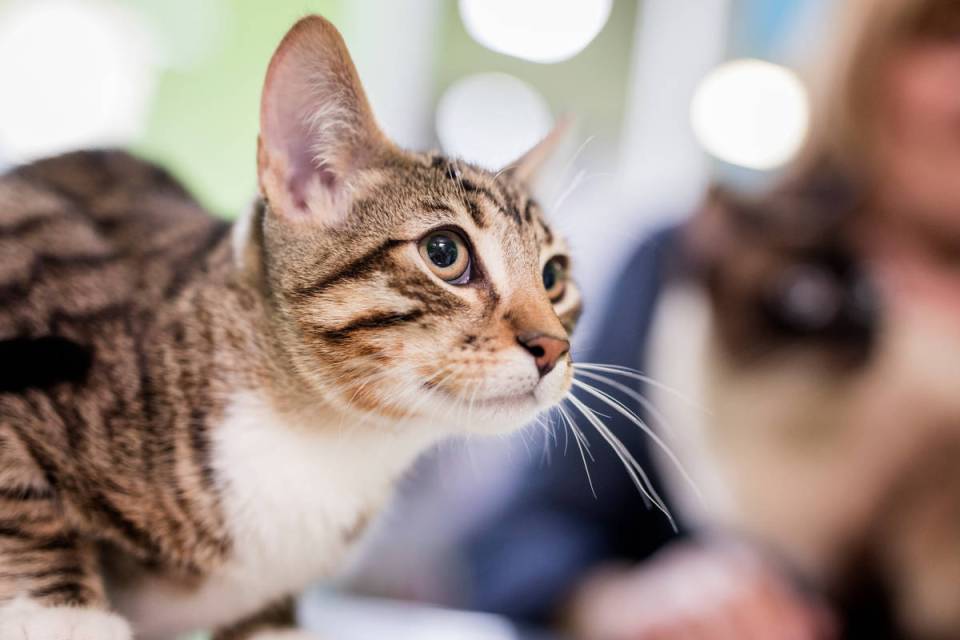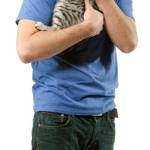
Panleucopaenia (Feline Parvovirus Infection)

Introduction
Feline panleukopaenia, also known as Feline Parvo, is a highly contagious, often fatal, viral disease of cats that is seen worldwide. Panleukopaenia refers to a decrease in all types of white blood cells. The virus is very similar to the one that causes parvovirus in dogs and indeed recent parvovirus strains of dogs have been show to infect cats and cause feline panleucopaenia 1.
Aetiology
Feline panleukopaenia is caused by Feline Panleukopaenia Virus (FPV) and is closely related to type 2 canine parvoviruses (CPV) that cause canine parvoviral enteritis. FPV can cause disease in all felids and in some members of related families (e.g., raccoon, mink), but it does not harm canids.
Epidemiology
All unvaccinated cats are at risk but kittens and young cats are most susceptible and most severely affected. Pregnant queens and immunocompromised cats are also at higher risk of infection. Infected cats shed virus in their urine and faeces for up to six weeks. The virus can survive in the environment for long periods (many months or even years) and is resistant to many cleaning products and disinfectants. As a result, contact with a contaminated environment is the most likely source of infection. The virus can also be spread by people who have not washed their hands appropriately between handling cats, or by materials such as bedding, food dishes or equipment that has been used for other cats. Kittens may also be infected inside the womb by the virus passing across the placenta from the queen, if she is infected while pregnant.FPV can be destroyed by exposure to a 1:32 dilution of household bleach (6% aqueous sodium hypochlorite).
Clinical signs
FPV affects the rapidly dividing blood cells in the body, primarily the cells in the intestinal tract, bone marrow, and in the stem cells of the developing foetus. A decrease in the number of white blood cells (WBCs) leads to immunosuppression, leaving the cat vulnerable to a number of viral and bacterial diseases that may prove fatal. Panleucopaenia causes severe vomiting, anorexia and fever. In some cases the disease can progress so quickly that a kitten may die before the owner even notices any signs and some owners may think their pet has been poisoned. Kittens deteriorate very quickly because once they stop eating and drinking, they become severely dehydrated. Older cats tend to be less severely affected and, if queens are infected whilst they are pregnant, they often show no signs of illness. The unborn kittens, however, can be infected within the womb and this may lead to their death ‘in-utero’ or damage to their developing brains.Cats that survive more than five days without developing complications are more likely to recover although it can often take several weeks for this to occur. If a cat recovers from panleucopaenia, it is highly unlikely that they will be infected with the disease again.
Diagnosis
A presumptive diagnosis is usually based on compatible clinical signs in a non-vaccinated cat together with a decrease in red and white blood cells in the blood count. The abdomen is often painful, the intestines are thickened and the lymph nodes in the abdomen are frequently enlarged. The virus can also be isolated from the faeces or urine, but this is a time-consuming and expensive test which is usually performed in research situations.
Control
Vaccination of kittens is the most important way to protect cats from acquiring a panleukopaenia virus infection. Boosters are required to maintain immunity and it is essential that queens are up-to-date before any planned breeding. One of the vaccines available in Ireland and the UK has been shown to cross protect against the canine parvo strains that can cause panleucopaenia. For further information on vaccination, please contact your veterinary practitioner or visit www.vaccination.ie.The environment of cats with panleukopaenia should be considered contaminated with the virus. A 1:32 dilution of household bleach should be used to disinfect floors, bowls, litter trays, cages etc. A cat should not be introduced into a cattery or household unless it has been vaccinated first.There is no cure for panleukopaenia. Treatment is typically supportive and aimed at controlling the clinical signs and includes intravenous fluids and antibiotics. Without intensive nursing, many cats can die.
For further information on disease and vaccination please click here.
1. Veterinary Microbiology 157 (2012) 78–85
